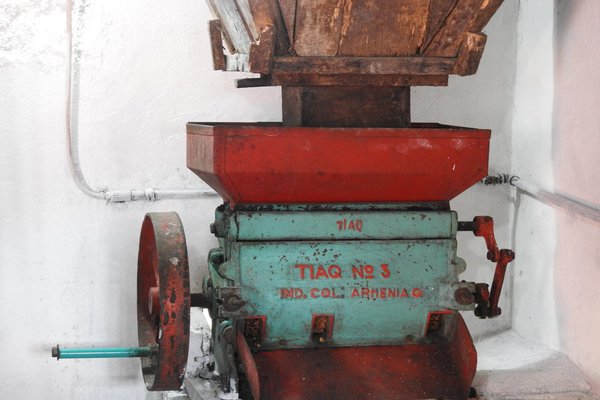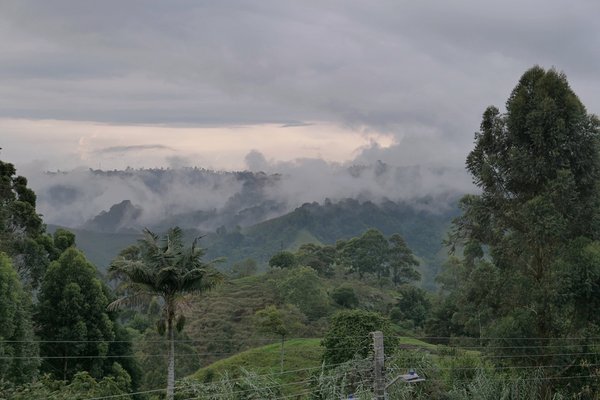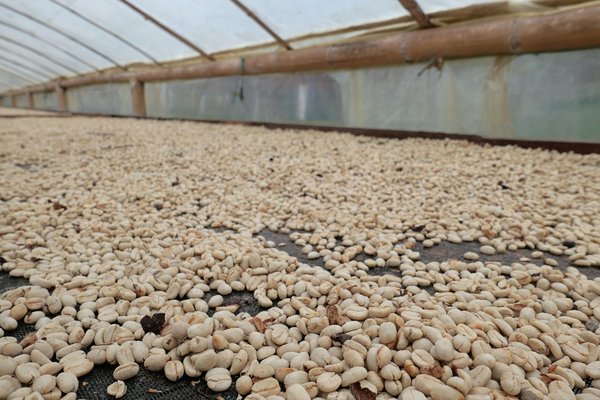Colombia
Coffee Cultural Landscape
The Coffee Culture Landscape of Colombia is a system of collectively cultivated coffee plantations in a mountainous landscape.
The area comprises 6 regions with a total of 18 villages and 24,000 small coffee farms. Together they account for around 35% of Colombian coffee production. The plantations and associated villages were founded in the 19th century and are still in use.
Community Perspective: the first reviewers tried to make sense of which areas exactly are part of the core zone, until Solivagant shed light on the matter. Els describes the particular way of coffee production that got the site inscribed, and Solivagant (in his 2nd review) highlights the coffee towns.
Site Info
Official Information
- Full Name
- Coffee Cultural Landscape (ID: 1121)
- Country
- Colombia
- Status
-
Inscribed 2011
Site history
History of Coffee Cultural Landscape
- 2011: Advisory Body overruled
- ICOMOS recommended Deferral - OUV (v, vi) not proven, comparative analysis needed improvement, boundaries/buffer zones needed improvement, serial approach as selelcted not justified. WHC inscribes with push from Bar, Mex, Brz
- 2011: Inscribed
- Inscribed
- Type
- Cultural
- Criteria
- v
- vi
Links
- UNESCO
- whc.unesco.org
- Official
-
- paisajeculturalcafetero.org.co — Paisaje Cultural Cafetero
All Links
UNESCO.org
- whc.unesco.org — whc.unesco.org/
Official Website
- paisajeculturalcafetero.org.co — Paisaje Cultural Cafetero
Community Information
- Community Category
- Human activity: Agriculture
- Cultural Landscape: Continuing
Travel Information
Recent Connections
-
Vernacular architecture
"The typical architecture in the urban … -
Sugar
Zone B: "Coffee of excellent quality is… -
Legends and Folk Myths
"According to tradition, scary spirits…
Connections of Coffee Cultural Landscape
- Geography
-
-
Andes
"on the foothills of the western and central ranges of the Cordillera de los Andes in the west of the country" (brief description)
-
- Trivia
-
-
Largest cultural WHS
141,120 ha -
Built or owned by British
The Temple of the Immaculate Conception in Salamina was designed by the English engineer William Martin.See es.wikipedia.org
-
- History
-
-
Fusion
"The typical architecture in the urban settlements is a fusion between the Spanish cultural patterns and the indigenous culture of the region adapted as well to the coffee growing process, through for example their sliding roofs." (OUV)
-
- Architecture
-
-
Gothic Revival
"a Neo-gothic trend is visible in the Cathedral and churches, ... in Chinchiná,... and Marsella." (Nomination file, p. 81) -
Vernacular architecture
"The typical architecture in the urban settlements is a fusion between the Spanish cultural patterns and the indigenous culture of the region adapted as well to the coffee growing process, through for example their sliding roofs. Houses function as both dwelling units and centers of economic activity, with walls built in the traditional, more flexible and dynamic 'bahareque' constructive system, and covered by a layer of bamboo well known for its resistance and malleability. Over fifty percent of the walls are still built using this traditional method." (OUV) -
Earth Architecture
"The undulating high-mountain landscape was slowly adorned with towns built in tapia - or cob - and bahareque - plaited cane and mud walls -, with mud roof tiles." (Nomination file, p. 73)
-
- Damaged
-
-
Destroyed or damaged by Earthquake
"The 1999 Colombia earthquake (...) heavily affected (...) the Colombian Coffee-Growers Axis region departments (...) The main economic activity of the region, the Colombian coffee industry was heavily affected. About 8,000 coffee farms were completely or partially destroyed, and 13,000 structures of several kinds of enterprises and industries were damaged and went temporarily or permanently out of service." (Wikipedia)See en.wikipedia.org
-
- Religion and Belief
-
-
Legends and Folk Myths
"According to tradition, scary spirits and diabolical figures known as Madremonte, Patasola, Hojarasquín del monte, Mohan or Muán, and Putas, live in the mountains making their daunting appearance when provoked. Although they are not directly associated to coffee and some of them are, in fact, universal, they were recreated with elements from the Paisa imaginary and they still "exist" in the rural areas." (Nomination file, p. 66)
-
- Human Activity
-
-
Cacao
1% of the landscape is used for cacao cultivation (nom file) -
Sugar
Zone B: "Coffee of excellent quality is produced in the municipality, which is also important for its sugar cane, blackberry and asparagus." (Nomination file, p. 51) -
Coffee
-
Human Migration
Coffee Cultural Landscape . "The CCLC is the result of the adaptation process of Antioquian settlers, who arrived in the 19th century"See es.wikipedia.org
-
Festivals
Carnival of Riosucio (ICOMOS AB Ev) (Nomination file, p. 50) – "Amongst the main festivals, some are related directly to coffee: the National Coffee festivals that take place in Calarcá; the Fiesta del Canasto, in Filandia; and the Fiestas de La Cosecha, in Pereira." (Nomination file, p. 50)
-
- Constructions
-
-
Cemeteries
"Cemeteries are also significant in terms of architectural design; those in Salamina and Marsella (National Monuments)... deserve special mention." (Nomination file, p. 81)
-
- Timeline
-
-
Built in the 19th Century
Growing of coffee and construction of the towns started in the 19th century
-
- Science and Technology
-
-
Botanical Gardens
"Marsella is a colonial town is famous for its botanic garden Jardin Bontanico Marsella Alejandro Hombolt which was set up to promote ecological sustainability in the area (...)." (Wikipedia)See en.wikipedia.org
-
Archaeological potential
Municipal area of Quinchía: "It is said to have great archaeological potential given by the fact that it was inhabited by tribes of Guaqueramaes and Tapascos, who dedicated themselves to the exploitation of alluvial gold and the extraction and commercialization of salt." (ICOMOS AB Ev)
-
News
No news.
Recent Visitors
Visitors of Coffee Cultural Landscape
- Adrian Turtschi
- AK
- Alberto Rodriguez Gutierrez
- Alejandro Lau
- Alexander Barabanov
- Alikander99
- Ammon Watkins
- ashombob
- Atila Ege
- basementonline
- BaziFettehenne
- Bill Maurmann
- Carlos Sotelo
- chiuliqi
- Daniela Hohmann
- Dorejd
- Els Slots
- Erik Jelinek
- Eva Kisgyorgy
- Fan Yibo
- Frédéric M
- Hammeel
- H Beswick
- headventure
- hotpickle
- irosey
- Janos
- Jarek Pokrzywnicki
- Javier
- Javier Coro
- Jawnbeary
- Jens
- jess4sythe
- J_neveryes
- Joyce van Soest
- KateY
- Little Lauren Travels
- Loic Pedras
- Lucas Del Puppo
- Lucio
- Maciej Gil
- manuel011197
- MarcoB_0
- Michael Ayers
- MMM
- Monica66
- Morodhi
- Nihal Ege
- Nuria8
- Patrik
- Patrik_globe
- Pchxiao
- Philipp Leu
- Pieter Dijkshoorn
- Priyaranjan Mohapatra
- Roger Ourset
- Roman Bruehwiler
- saraleonela
- Sergio Arjona
- Shombob
- sibariam
- Solivagant
- Sutul
- Szabo Viktoria
- Szucs Tamas
- Tamara Ratz
- Tevity
- Thomas Buechler
- Westwards
- zfish
- Zoë Sheng
Community Reviews
Show full reviews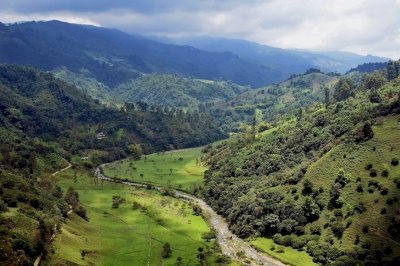
This review is not intended to be a review of the Coffee Cultural Landscape of Colombia generally because I was only physically in the buffer zone of this World Heritage Site. Specifically, this review is based on my visit of a coffee farm near a small town named Salento. While small portions of the World Heritage Site is within the political boundaries of Salento municipality, the town of Salento, as most know of it, is neither a part of the core zone nor the buffer zone
However, if you are in this pretty and somewhat touristy town of Salento, you should have no trouble arranging a coffee farm tour, some of which will be within the core or the buffer zone. I visited Las Acacia Coffee farm, which is nestled in the green mountain valleys near Rio Navarco and Rio Quindio. The photo accompanying this review is a view from the road in front of the farm, but facing away from the farm.
The Coffee Cultural Landscape near Salento is very pleasant to view and explore, but to be frank, you should be visiting Salento less for its small participation in the World Heritage Site, but more for its proximity to Valle de Cocora. Valle de Cocora, which is not within the World Heritage Site boundaries, is a striking valley filled with incredibly tall wax palm trees. The loop hiking trail (2-3 hours, moderate difficulty) is fantastic and strongly recommended.
Keep reading 0 comments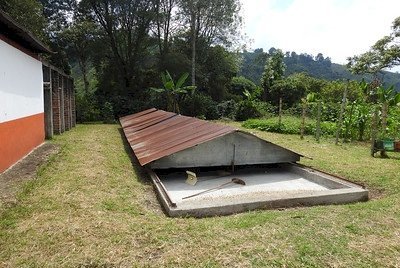
It is really telling that the 5 reviews of the Coffee Cultural Landscape so far focused fully or at least partly on the boundaries of this WHS. It reminded me of a WH travelers group T-shirt suggestion (made by Samuel) that promoted the slogan “Are we in the core zone yet?”. Well, I will focus on the coffee production instead as the ‘tick’ should consist of having seen/experienced the OUV in addition to setting foot in a certain area.
What makes Colombian coffee farming (especially in and around the selected areas) different from others? Most farms are small-scale family operations using manual labour, shade-grown coffee is the traditional system and there is a strong community focus on coffee production in all aspects of life. I decided to look for these characteristics south of Salento, in an area called Palestina. Here there are a number of coffee farms that are open to visitors. The biggest (which even needs pre-booking) is El Ocaso, one of the most popular among English-speaking tourists is Don Elias, but I went for the more low-key El Recuerdo. I hiked there in just over an hour from Salento on a pleasant path, where the coffee plants that had been absent so far on my travels in this region became more and more prominent in the surrounding landscape.
El Recuerdo is a small, organic farm that applies polyculture. Besides coffee, they grow fruits and herbs for their own use. They adhere to the principles of the …
Keep reading 0 comments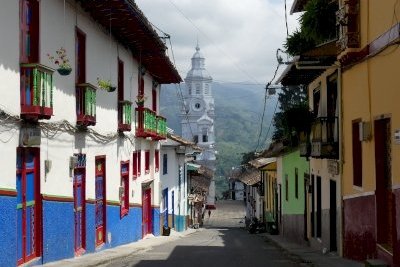
My previous review for this WHS explained how, in Nov 2019, we determined that we had visited 4 towns in the core area (Zone D) of the “Coffee Cultural Landscape” (CCL). We also visited a number of neighbouring “Veredas” (or “rural areas”) including some in “core” areas and some in “buffer zones”. So, what did we make of this WHS - what was its “Heritage value” and was there a coherent story to tell?
We didn’t take a “Finca Tour” in the CCL as we had already done so in other parts of the World where coffee is grown. However, in other coffee producing areas of Colombia we had pleasant and close interactions with “Campesinos”, visiting and talking to them in their homes and seeing them preparing and drying the coffee there from “plant” to “sack”. We had also visited the town of Inza (nr Tierradentro) on its coffee market day and concluded that it was difficult to envisage an area more reliant on the coffee business than it was – certainly the CCL isn’t any more so. See this article about Inza's small coffee growers. Which raises the question as to what is so “special” about the inscribed CCL which raises it above (or at least makes it different from) the multitude of non-inscribed coffee producing areas in Colombia?
It isn’t the quality of the coffee either. We asked Colombians we met whether the coffee from that area was the “best” in Colombia. It appears that it …
Keep reading 0 comments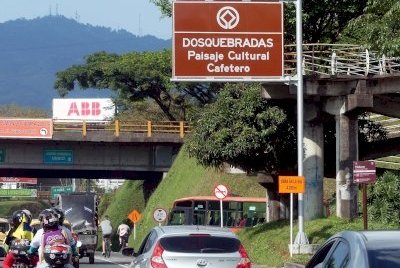
As of May 2023 a number of the links referred to in my 2 reviews of CCL are broken. Many (but not all) are still available if you enter the link into Wayback Machine
As previous reviewers have identified, the first problem when making a visit to the Coffee CL WHS is to determine where exactly the boundaries are and how you “know” if you are/have been inside them. The execrable maps provided on the UNESCO Web site (Michael Ayers - I agree with every word you say!) show 6 inscribed “landscape areas” (or “Zones”) which cover a large area of central/western mountainous Colombia. I have studied those maps (and other sources), both before and after our travels, trying to make sense of them and, before reviewing any of the areas we visited, I will cover below the conclusions I reached and suggestions as to how others might use the available sources to determine their own visits to this WHS ensuring that they visit a core area if they so wish! If the detailed boundaries of the CCL are of no interest to you then please read no further!
The best entrée to making sense of the boundaries is via the Nomination file. The Executive Summary on PDF Pages 10/11 states that “The Coffee Cultural Landscape (PCC) covers areas of 47 municipalities spread over four Colombian departments” (these in turn are spread across the 6 “Zones” so a few departments, e.g Risaralda, have areas in more …
Keep reading 0 comments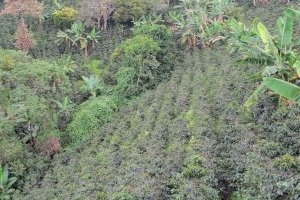
We finally made it to a WHS my wife was more excited about than I was. I knew we would pass through this WHS somewhere along the road between Armenia and Salento at the very least but like others before us, were unsure of the exact boundaries. So we adopted our own interpretation of what we were supposed to be seeing/doing there. For the cultural part we visited Salento and nearby Filandia, both nearly identical in appearance with pretty, colourful buildings spreading outwards for a few block radius from their central squares. This is tourist central, especially on the weekend with all the local tourists day-tripping in.
We also observed the landscape within the core zone, both as we passed through but also from several viewpoints around Salento and especially Filandia where there is a tall wooden observation tower from which you can see all the surrounding villages as well as Armenia. There wasn't as much coffee growing here as we expected considering the importance of the crop to the local economy. We visited a family run coffee finca too and took the tour. It might've been within the buffer zone but we aren't sure. This seemed a fair example with their traditional methods still preserved unlike some of the larger, commercial operations. We learned quite a bit in the process and found it worthwhile. My wife insisted on drinking copious amounts of local coffee so we nailed that part too ;)
Keep reading 0 comments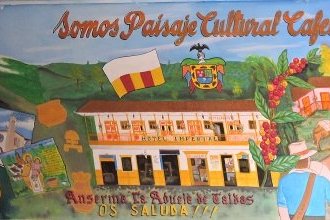
Visited in February 2019.
Like many members, I am often bewildered when trying to determine exactly what I am supposed to see when visiting a Cultural Landscape site. Colombia's recently-inscribed Coffee Cultural Landscape is a perfect example of that.
As I prepared my recent visit, there was a map available on the UNESCO page for this site that, in theory, gives the location of the core- and buffer-zones of this site. However, the map is close to impossible to read easily, seemingly being created from whatever public-domain map its creators could find. Text labels for cities and towns are sometimes in the wrong place, and the roadways, and other landmarks, are also not very clear. Nevertheless, after staring at this map for a long time, I was able to determine that I would pass through two sections of the core zone on my recent cycling trip, namely the town of Anserma (presumably all of the city center is not included, but the area just beyond that is), where I spent one night, and the roadway connecting the towns of Viterbo and Apia.
There is certainly coffee being grown in these areas, though maybe not as much as you might expect. There is also a lot of sugarcane and bananas, though the latter are often used as a shade crop for coffee. I did not notice any sort of buildings or other infrastructures involved in the processing of coffee in these two areas.
The only informational items …
Keep reading 0 comments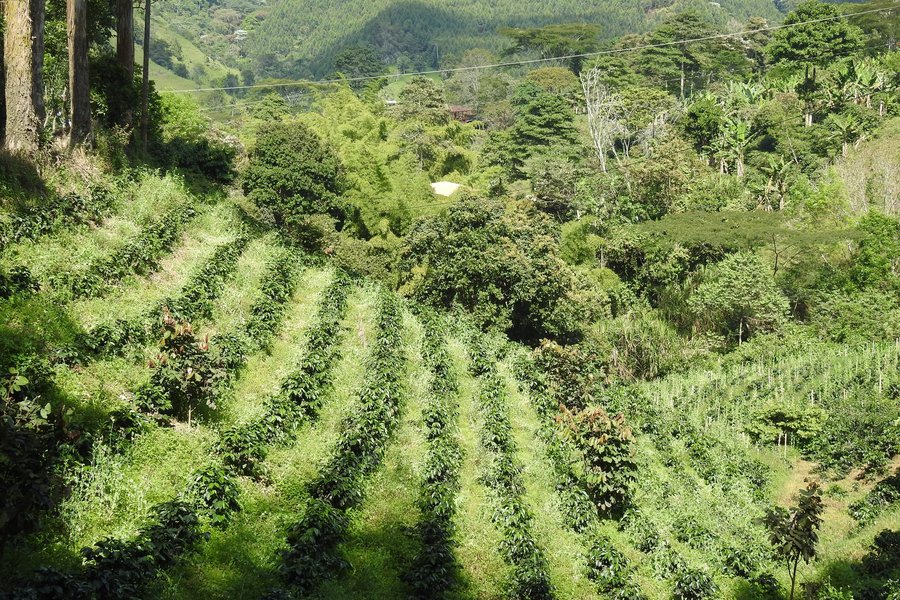
First of all - it is not easy to distinguish what exactly was inscribed as Coffee Cultural Landscape - particular coffee farms, land area, towns and villages. All available maps do not show inscribed zone, there are no signs of World Heritage in the places (yet, November 2011) that is for sure inscribed as UNESCO heritage. But for sure the landscapes are spectacular although I haven't seen any difference between inscribed part and non-inscribed.
I was visiting Salamina, passing through Chinchina, travelling around Salento, Manizales, Armenia and Pereira. Those areas are either directly inscribed as WHS (Salamina, Chinchina) or located in close vicinity of Coffee Cultural Landscape. Salamina is truly remarkable (nice colonial town, sourrounded by high mountains, with lovely old houses, one the most interesting places in Colombia). Chinchina looks to be quite ordinary, like many other towns.
Keep reading 0 comments
